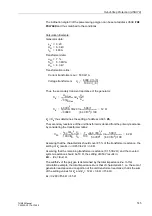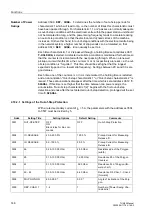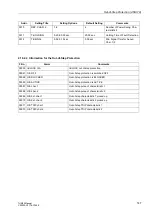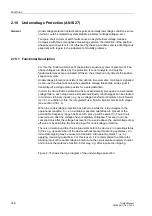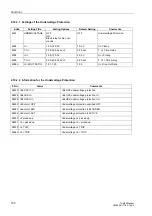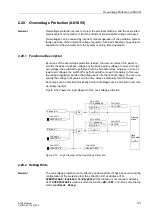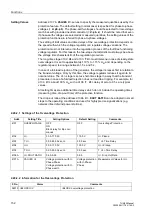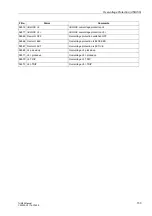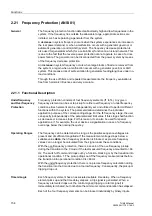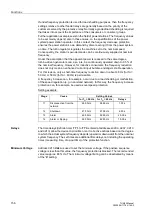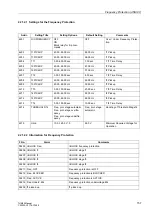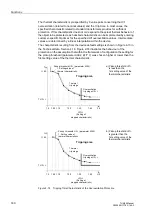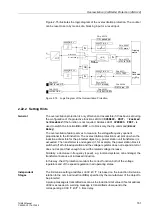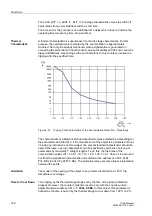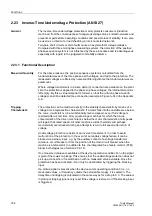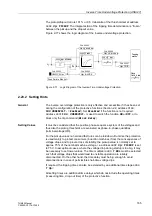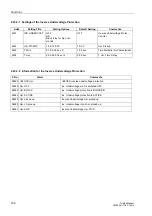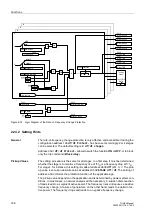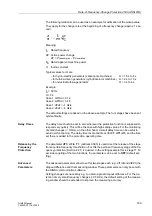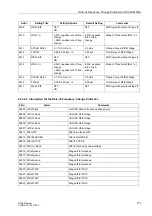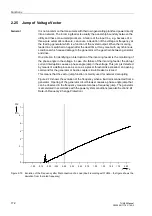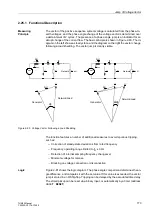
Overexcitation (Volt/Hertz) Protection (ANSI 24)
159
7UM62 Manual
C53000-G1176-C149-3
2.22
Overexcitation (Volt/Hertz) Protection (ANSI 24)
General
The overexcitation protection is used to detect impermissible overexcitation conditions
which can endanger generators and transformers. The overexcitation protection must
pick up when the induction admissible for the protected object (e.g. power station unit
transformer) is exceeded. The transformer is endangered, for example, if the power
station block is disconnected from the system from full-load, and if the voltage
regulator either does not operate or does not operate sufficiently fast to control the
associated voltage rise. Similarly, decrease in frequency (speed), e.g. in island
systems, can endanger the transformer because of increased induction.
An increase in induction above the rated values leads very quickly to saturation of the
iron core and to large eddy current losses.
2.22.1 Functional Description
Measuring
Procedure
The overexcitation protection feature servers to measure the voltage/frequency ratio
which is proportional to the B induction and puts it in relation to the B
N
nominal
induction. In this context, both voltage and frequency are related to nominal values of
the object to be protected (generator, transformer).
The calculation is based on the maximum voltage of the three phase-to-phase
voltages. The frequency range from 10 Hz to 70 Hz can be monitored in this way.
Transformer
Adaptation
A perhaps existing deviation between the primary nominal voltage of the voltage
transformers and the object to be protected is compensated by means of the internal
correction factor (U
N prim
/U
N mach
). For this reason, pick-up values and characteristics
do not need to be converted to secondary values. As a prerequisite, however, the
system quantities ’primary nominal transformer voltage’ and ’nominal voltage of the
object to be protected’ must be entered correctly (see Sections 2.3 and 2.5).
Characteristics
The overexcitation protection feature includes two staged characteristics and one
thermal characteristic for an approximate modeling of the heating which the
overexcitation may cause to the object to be protected. As soon as a first pickup
threshold (warning stage
) has been exceeded, a
time
stage starts. A warning message is transmitted subsequent to the expiration of this
time stage. A counter switching is activated when the pickup threshold is exceeded.
This weighted counter is incremented according to the present U/f value.
Consequently, the trip time results from the parameterized characteristic. A trip signal
is transmitted as soon as the trip counter state has been reached.
The trip signal is canceled as soon as the value falls below the pickup threshold and
the counter is decremented according to a parameterizeable cool-down time
selection.
B
U
f
----
∼
B
B
N Mach
--------------------
U
U
N Mach
---------------------
f
f
N
-----
---------------------
U
f
----
=
=
(simplified
notation)

